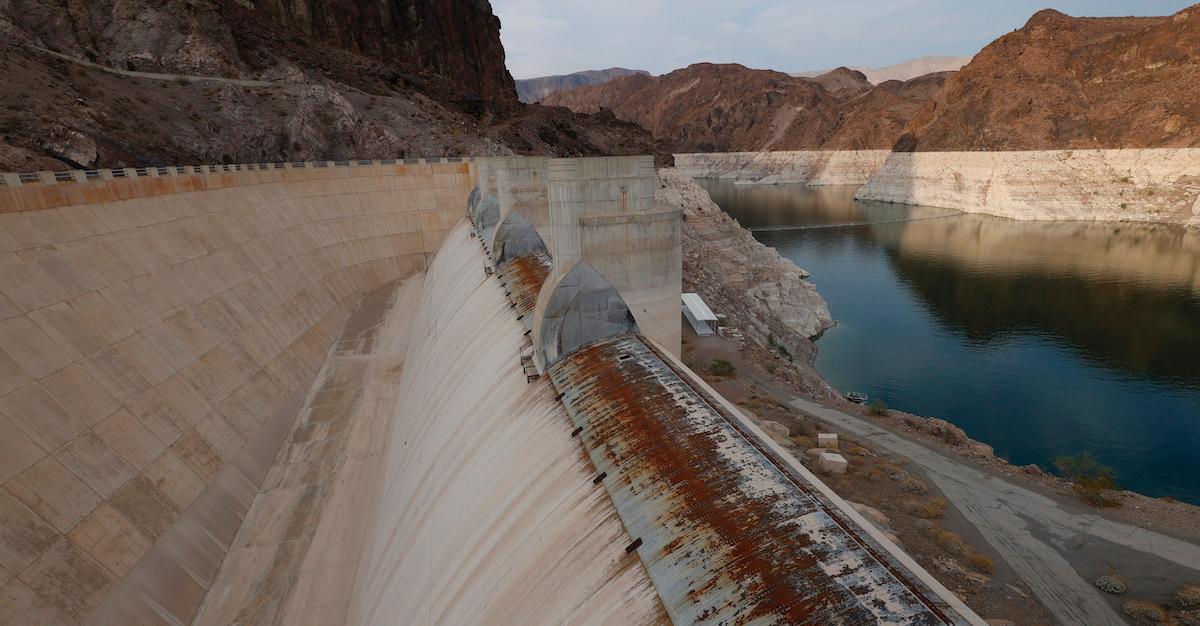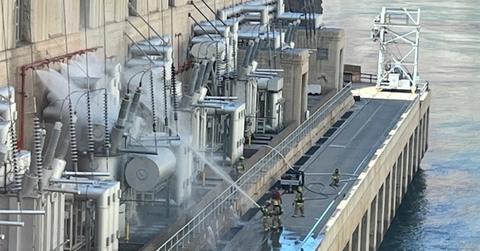A Transformer Exploded at Lake Mead's Hoover Dam, Fortunately Resulting in Zero Injuries
Published July 20 2022, 2:47 p.m. ET
Lake Mead has faced a rough year, to say the least — in June, officials recorded the Southwestern U.S. reservoir's lowest water levels, thanks to the ongoing drought and record-high temperatures. And yesterday, a transformer in the reservoir's Hoover Dam exploded.
The dam, which produces hydroelectric power, was erected during the Great Depression, and decades later it still delivers renewable energy to millions of U.S. households. The exact cause of the fire is still under investigation.
Fortunately, the fire was quickly contained and within 30 minutes, it was extinguished.
"At approximately 10 a.m. (PDT) the A5 transformer at Hoover Dam caught fire and was extinguished by the Reclamation/Hoover fire brigade at approximately 10:30 a.m.," reads a confirming statement from the U.S. Bureau of Reclamation, which owns and operates the Hoover dam, its powerhouses, and turbines.
But most importantly, nobody was hurt, and the explosion won't affect the distribution of power to its many customers.
"There are no injuries to visitors or employees," the statement continued. "There is no risk to the power grid and power is still being generated from the powerhouse. We are investigating the cause of the fire and will provide additional updates as they are available."

What to know about the Hoover Dam fire:
If you aren't familiar with the history of the Hoover Dam, it was constructed under President Franklin D. Roosevelt in September 1935, according to CNN. It heavily relied on the Colorado River for energy, to serve as an electricity source to those living in remote Southwest communities.
It also helped with irrigation, and aided in developing several major cities in the southwest region. So because of its longstanding history, many were shocked to hear about the recent fire.
Even though the exact cause of the fire and the extent of the damage from the Hoover Dam transformer explosion is currently under investigation, officials are blaming faulty electrical equipment, according to Bloomberg News.
The dam, which spans 1,244 feet long in length at the top, is home to 15 power transformers. The transformers are used to control how much electricity is sent to 8 million customers that rely on the dam to power their homes.
“There is no risk to the power grid and power is still being generated from the powerhouse,” Jacklynn Gould, a regional director for the U.S. Bureau of Reclamation, told CNN. “We are investigating the cause of the fire and will provide additional updates as they are available.”
The explosion took place 25 miles from Las Vegas, and thousands of vehicles drive across the top of the dam on a daily basis, so needless to say, it's fortunate nobody was hurt.
The Hoover Dam's hydropower is in danger, thanks to ongoing droughts.
The ongoing summer droughts have make things difficult for those in the southwest, and apparently, they are taking a toll on local hydropower dams.
According to AP News, hydroelectric power is being threatened by sinking water levels in both Lake Mead and Lake Powell. Over the last few years, officials have done what they can to keep the lakes supplied with water, but the droughts have been seriously relentless.
"We are 23rd year of drought here in the Colorado River Basin and Lake Mead has dropped down to 28 percent," Patti Aaron of the U.S. Bureau of Reclamation stated, as per France24. "There isn't as much head so there isn't as much pressure pushing the water into the turbines, so there's less efficiency and we aren't able to produce as much power."
Hopefully officials are able to find a resolution soon, to maintain the local power supply before it's too late.
